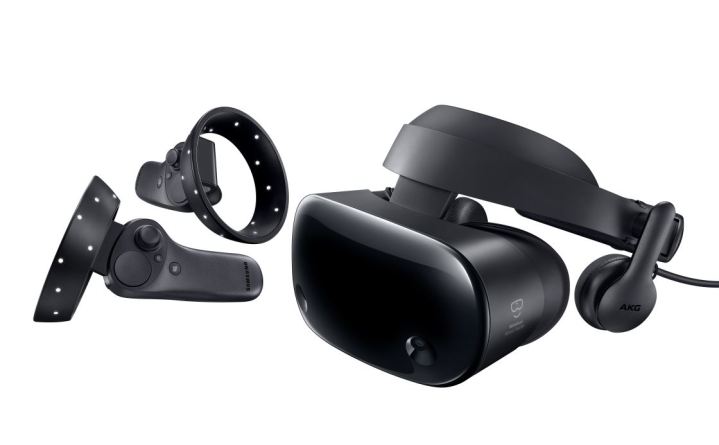
Samsung is giving its Odyssey Windows Mixed Reality headset a nice refresh. With the HMD Odyssey+, Samsung is focusing on a better and more comfortable visual experience. Though Samsung’s refreshed efforts didn’t result in a wireless mixed reality headset that has been rumored in recent months, the biggest improvement that the Odyssey+ delivers is a new exclusive anti-screen door effect, or anti-SDE, in the display.
The headset ships with dual 3.5-inch AMOLED displays, delivering a combined resolution of 2,880 x 1,660 pixels, and the new anti-SDE feature should give wearers a cleaner and crisper view into mixed and virtual reality experiences. And by eliminating the screen door effect, Microsoft claims that this not only leads a more enjoyable experience, as it could help reduce the feeling of dizziness or nausea.
“Samsung anti-SDE AMOLED Display solves SDE by applying a grid that diffuses light coming from each pixel and replicating the picture to areas around each pixel,” Microsoft explained in a blog post. “This makes the spaces between pixels near impossible to see. In result, your eyes perceive the diffused light as part of the visual content, with a perceived PPI of 1,233PPI, double that of the already high 616PPI of the previous generation Samsung HMD Odyssey+.”
With the anti-SDE feature, the headset and its motion controllers will ship for the same $500 that its predecessor debuted at starting Monday, October 22. Microsoft also reduced the price of the original HMD Odyssey down to $349 on its online store, but at at the time of this article’s publication, a listing for the Odyssey+ has not appeared on Microsoft’s online store.
Although the overall design of the Odyssey+ is reminiscent of the original Odyssey, Samsung also made a few tweaks to make the headset more comfortable this year. The Odyssey+ is a few ounces lighter, weighing 1.3 pounds, and comes with improved ergonomics, like a wider eye box. The headset is also more adjustable this year, allowing you to adjust the display position and control the Inter-Pupillary Distance with a wheel.
Like recent Samsung consumer products, the headset leans on AKG to deliver a premium audio experience. Samsung claims that the headset will deliver 360-degree Spatial Sound that can simulate 3D sounds. This will help you feel more immersive in mixed reality environments, especially since the Odyssey+ also supports six degrees of freedom (6 DoF).
“The 6DOF controller can detect your every move and distance traveled inside your MR world, responding quickly to the slightest motion, ensuring your gameplay movements are more natural, and significantly reducing any dizziness from in-game motion,” Microsoft said.
Editors' Recommendations
- Should you wait for the 2023 Samsung Odyssey Neo G9, or buy last year’s model?
- The next Vision Pro could let you see invisible energy
- Samsung wants you to reserve the Odyssey OLED G9 — without knowing the price
- If iOS 17 is a letdown, you can blame this one Apple device
- You can now get the Samsung Odyssey Ark — if you can stomach the price


